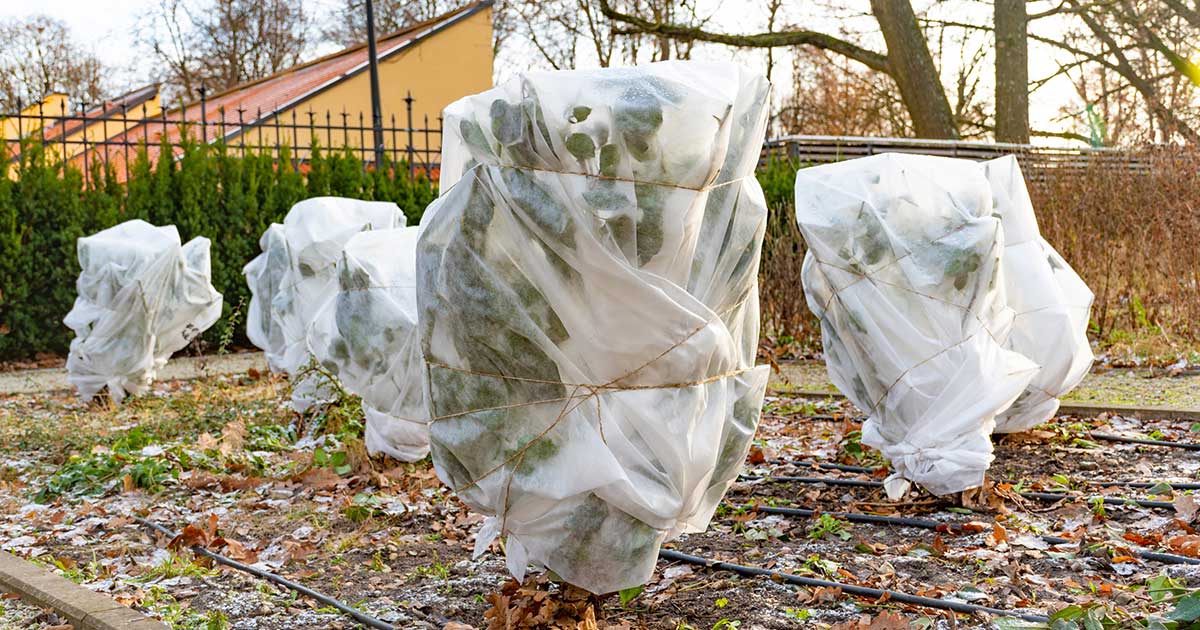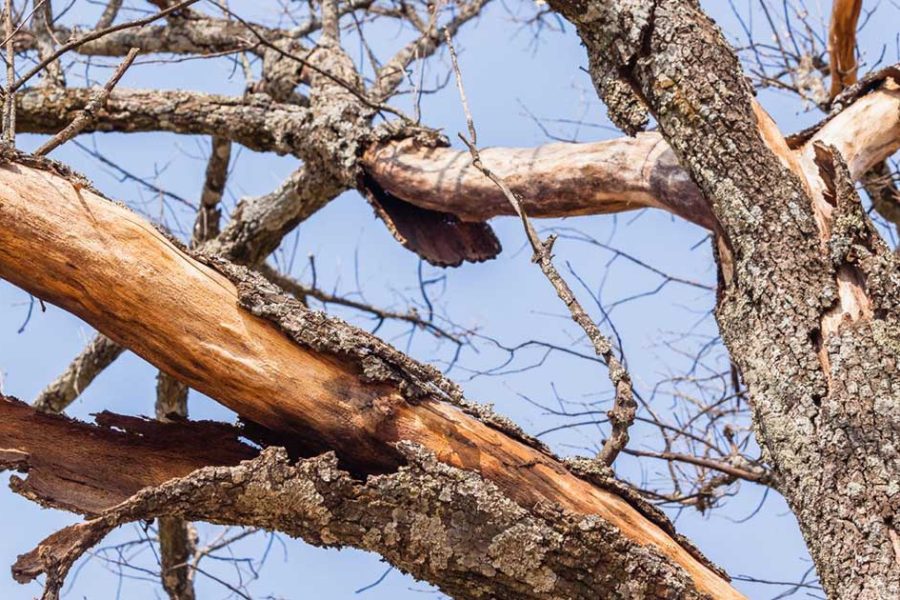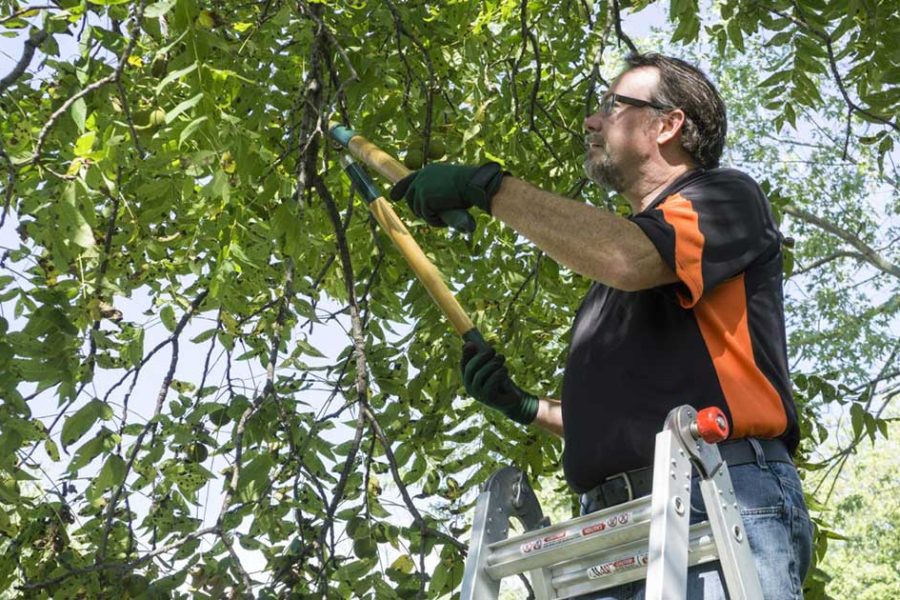Winter can be a season of extremes, from shoveling snow out of the driveway to tending your fingers from frostbite. The season comes with its own set of hurdles. Just like you struggle to get used to the chill of winter, the same goes for your trees.
Your trees may be the giants of your home, but they are still vulnerable under the weight of the snow. This guide will help you prepare your trees in winter, ensuring green sprouts for spring.
Common Methods For Winter Protection For Your Trees
During winter, trees enter a state of dormancy, making it crucial for homeowners to take preventative measures to ensure their safety. Here are some steps you can take to protect your trees in winter.
Inspect Your Trees
When you feel a chill in the air or notice your tree shedding its leaves, that’s the best time for a tree evaluation. This practice can help identify any structural defects and address any limbs that may pose a hazard during blizzards or storms.
If you lack the expertise to inspect your tree, you can always invest in winter tree inspections. A certified arborist can diagnose underlying issues while the tree is bare, ensuring your safety throughout the seasons.
Spread A Fine Layer Of Mulch
Cold air can suck away the moisture from the ground, leading to less than optimal conditions to preserve your trees. By spreading a layer of mulch around your trees or plants, you can retain the moisture in the soil to keep your roots hydrated and prevent tree breakage.
Most trees become a culprit of frost heaving during winter. This occurs due to extreme weather fluctuations, causing the water to freeze and thaw, leading to uprooted trees and plants. With mulch, you can avoid frost heaving, ensuring your trees stay firmly rooted in place. To learn about protecting ailing or young trees in winter, contact your local arborist for expert advice.
Wrap Your Trees
Young or newly planted trees are susceptible to winter dangers like sunscald and frost cracks. By wrapping your trees, you can retain natural heat from the soil, preserving your trees and reducing the likelihood of tree death in severe cases.
Cover Your Trees With Burlap
Another method of shielding young trees in winter is by wrapping them in burlap. You can use burlap secured with a twin to retain moisture, prevent sunscald, and provide insulation against extreme weather conditions while allowing air ventilation. This ensures longevity and creates an optimal environment for your tree to rest in winter. Wrapping newly planted trees in winter is the best protection against deer and rodents.
Remember To Water Your Trees Regularly
Droughts aren’t restricted to the summers. Your trees can experience a winter drought that sucks the moisture in the soil, impacting the tree’s central root system. Failure to replenish your tree’s water intake can lead to tree death.
Make sure your plants and trees in winter are well-watered throughout the season. Before doing so, ensure the ground is clear from snow and the temperature is above 40°F. This helps your tree absorb the water effectively, allowing it to stay healthy and hydrated throughout the winter.
Your trees don’t require their usual water intake in the winter; avoid watering them more than 2 times in the winter. If you have any questions, you can always contact your local arborists to learn more about a healthy watering system.
Provide Them With Nutrients
Fertilizer is a great way to secure the future of your trees. By spreading a layer of specialized fertilizer on the ground above, you can equip your trees with the essential nutrients for the upcoming season. The tree will naturally absorb the nutrients over time, improving its root system and reducing the probability of tree death.
Remove Snow From Trees
The weight of snow can be exhausting for certain trees. Weak or ailing trees or branches can break or fall under the threat of heavy snow, leading to blisters or cracked branches. A cracked union can significantly weaken the structural integrity of the trees and increase the probability of tree death in severe cases.
Gently remove the snow from the branches using a broom or brush and avoid forcibly shaking the branch as it can cause it to break under external force. Under any circumstances, do not climb a tree to get rid of the snow. Instead, call a professional arborist to take care of the job.
Guard Against Animals
Hungry rabbits or rodents replenish their food intake by eating tree bark or nesting around the tree trunks. To discourage nesting, you can try wrapping your tree in hardware cloth or installing a plastic fence approximately 1 foot higher than the average snow level.
Prune Your Tree
Winter is the best time for tree pruning services. Trees enter a state of dormancy or “rest” until warmer seasons provoke them to get active. As they lose their leaves, shedding light on their naked structure which can help identify dead or dangerous branches.
A trained arborist can identify dead or overgrown branches and safely remove them, creating a stable structure and eliminating potential hazards. This approach can help prepare your trees under extreme winter conditions while ensuring their safety and integrity.
Protect Your Trees In Winter With Hubbard Tree Care
Winter preventative measures go a long way in protecting the strength and vitality of your tree. Hubbard Tree Care offers reliable tree pruning services to eliminate structural defects, reduce potential hazards, and promote a smooth winter-to-spring transition. Contact us today, and our certified arborists will arrive promptly to help your tree stay safe during winter.





